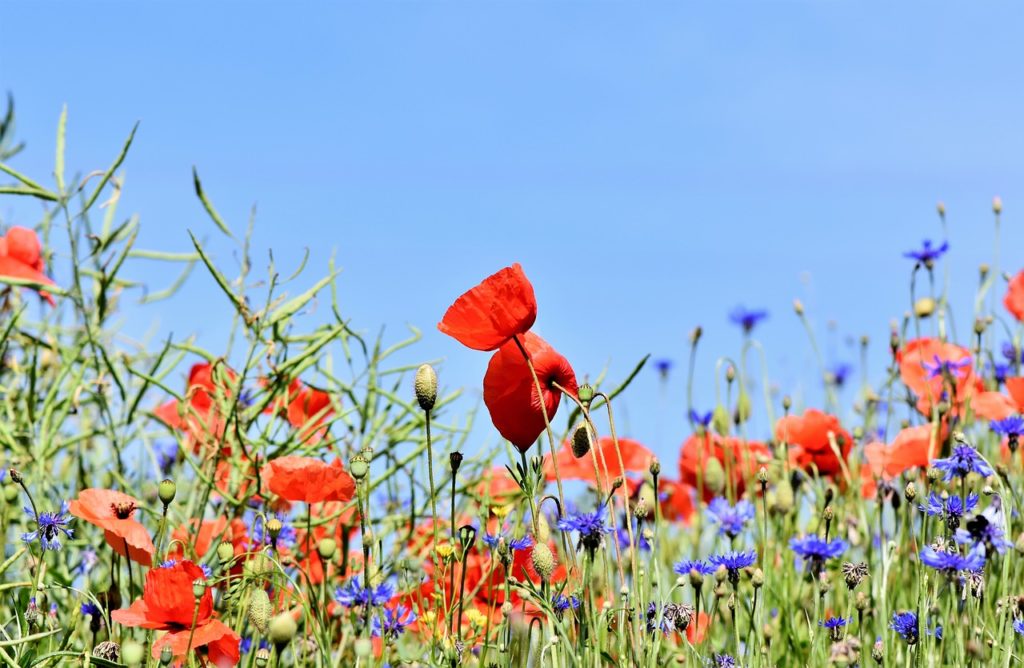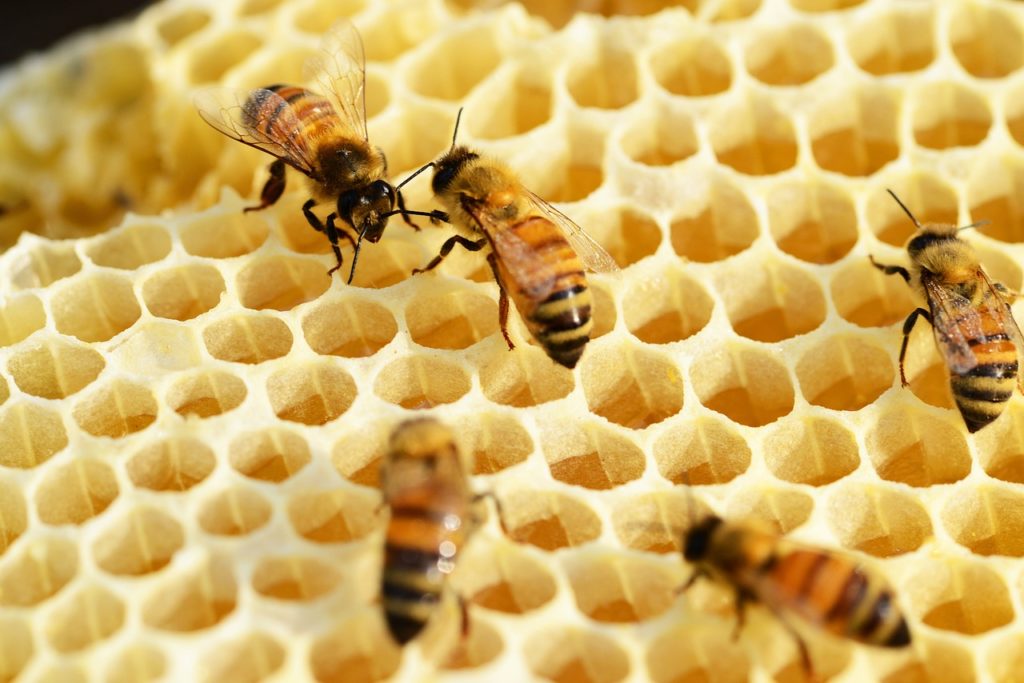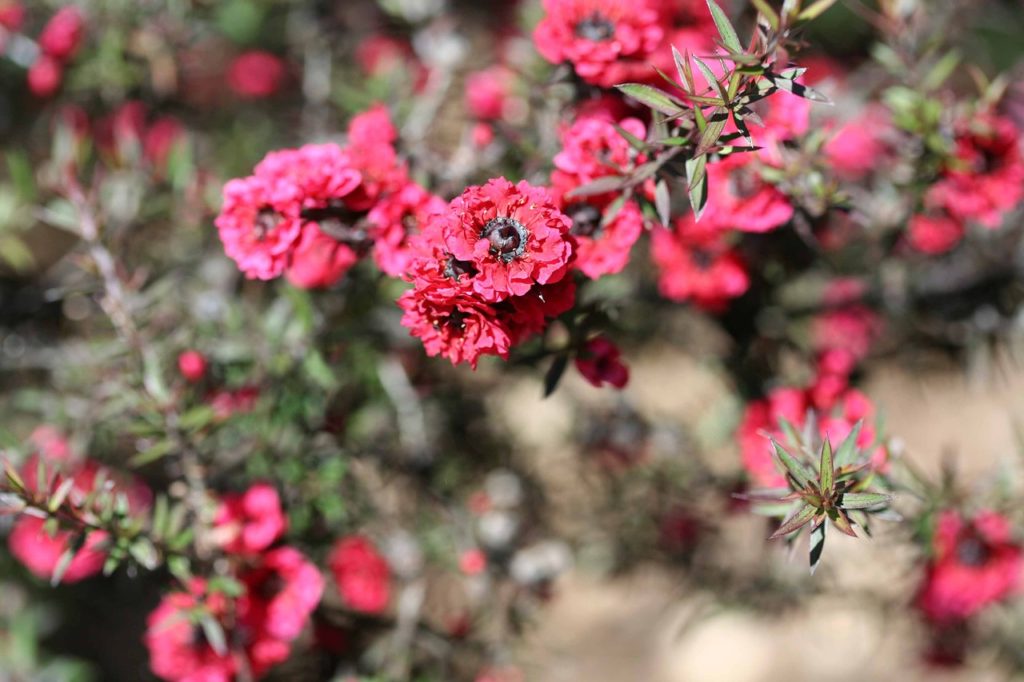A ‘Landscape physiology’ approach for assessing bee health highlights the benefits of floral landscape enrichment and semi-natural habitats

Honey bees are only as healthy as their environment. Ideal habitat supplies pollinators with a consistent supply of floral diversity. Pollen and nectar dearth are stressful times for pollinators, the longer the dearth the greater the consequences on health and successful overwintering. French researchers studied the relationship between floral landscapes and overwintering success in honeybees to understand how habitat-restoration may improve pollinator habitat and health.
Experimental setup
N: 350 colonies over 2-year period (2012-13, 2013-14)
Location: Intensive farm central western France
Setup: Annual enrichment of 5-31.5 ha melliferous catch crops in 1.5km radius (within foraging range) during pre-winter period (mid-Sept to mid-Oct). Colonies located either inside the melliferous catch crop enriched area (n=184 colonies, 10 apiaries) or 8-10 km away in non-melliferous catch crop fields but within foraging range (n=166 colonies, 8 apiaries). Melliferous catch crop enriched species: Avena sativa, Brassica juncea, Helianthus annus, Phalcelia tanacetifolia, Sinapis alba, Trifolium alexandrinum, Vicia benghalensis, Vicia sativa. All colonies owned by the same beekeeper and therefore shared same management history. Different colonies were monitored each year of the study.
Methods: In September, colonies received APIVAR® and number of brood frames were recorded. In October, brood quantity, overall health and Varroa infestation levels were reassessed. Varroa infestation was monitored using soapy water to dislodge the mites from 200 bees and reported as mites per 100 bees. Fat body quantification was performed on 20 adult bee abdomens to measure the expression level of vitellogenin. Colonies that had not collapsed, became orphaned or weakened were considered successfully overwintered. Colony survival was then associated with overall health, brood production, Varroa infestation and surrounding landscape. Landscape quality was documented by quantifying semi-natural habitat within 1.5km foraging range from the apiaries. Pollen samples were obtained from five overwintered colonies at each apiary (n=27, 10 apiaries). Pollen traps were also used to collect samples at the entrance of hives over a few days during the second week of catch crop flowering. Pollen species and genus were identified using microscopy. Nutritional content of pollen was also identified.
Predictions: Levels of vitellogenin are associated with overwintering survival. Varroa infestation and landscape quality influences fat body content.
Results:
Vitellogenin positively influences overwintering survival by promoting oxidative stress resilience, immunity and longevity. Higher vitellogenin levels is directly associated to higher fat body content. Varroa infestation lowers overwintering survival. No link was found between vitellogenin and Varroa levels. All colonies were treated with APIVAR® at the beginning of the experiment and may explain the negligible effects of Varroa infestation on vitellogenin levels. Brood production has a direct and positive influence on Varroa infestation and fat body content. Varroa reproduce in brood cells. Nurse bees use nutrients stored in fat bodies to produce brood food secreted from their hypopharyngeal glands.
Landscapes enriched with melliferous catch crops and semi-natural habitats promoted development of winter bees, increasing overwintering survival. Landscapes with adequate nutritional resources for bees does not prevent negative effects of other factors (ie. pathogens, pests) before overwintering.
The relationship between comb age and performance of honey bee (Apis mellifera) colonies

Regularly replacing old honeybee comb is a common practice in beekeeping to keep the hive clean and reduce the buildup of pathogens and pesticides. Newly built comb is a beautiful white color that gradually turns yellow as pollen accumulates in the comb. Brood rearing turns the comb dark brown. The cell walls thicken and shrink from numerous generations of cocoons and fecal material from developing brood.
The objective of this study conducted at the King Faisal University, Al-Ahsa oasis, in eastern Saudi Arabic was to investigate the relationship between comb age and the performance of honey bee colonies (food storage, brood production, colony growth, honey production).
Experimental Setup:
N: 20 colonies of hybrid Carniolan honey bees of similar strength (brood, bees, food)
Location: Al-Ahsa, eastern Saudi Arabia
Methods: Colonies were divided into 4 groups of 5 colonies. In group 1, existing comb was replaced with 1-year old empty comb, group 2 with 2-year old empty comb, group 3 with 3-year old comb and group 4 comb with 4-year old comb.
Colony activity and pollen loads were recorded by monitoring entrance activity for 60 seconds periodically from July through December.
To quantify activity within the hive, frames were divided into square inches to record population size, brood production and food storage every 12 days. Honey production was determined by comparing the weight of comb prior to and after extraction.
Results:
Data suggests that performance of honey bee colonies is significantly affected by comb age. Colonies in groups with 1-3-year comb were significantly more active in foraging rate, brood and honey production than the group with 4-year old comb.
The effect of carbohydrate sources: Sucrose, invert sugar and components of mānuka honey, on core bacteria in the digestive tract of adult honey bees (Apis mellifera)

The exact role diet plays on gut bacteria is not fully understood in humans nor honey bees. Honey bees have a carbohydrate rich diet. When nectar is unavailable, beekeepers supplement this deficiency by supplemental feeding of sugar-rich carbohydrates like sucrose and invert sugar. New Zealand researchers compared the effects of sugar supplements on the abundance of gut bacteria in honey bees fed manuka honey containing natural antibacterial properties or an artificial diet containing invert sugar, and sucrose solutions with added antibacterial compounds.
Experimental Setup
N: 53 cages of bees divided into six modified diets containing eight replicates. Control hives contained five replicates.
Location: New Zealand Institute for Plant and Food Research Limited, Hamilton, New Zealand
Methods: Black eyed honey bee pupae were removed from a single-frame of brood and reared in a lab until emergence. Newly emerged workers were marked and returned to their parent colonies for seven days, during which time the bees would develop their core gut bacteria. After seven days, the bees were recaptured and housed in plastic queen cages and fed seven diet treatments. Control cages were pressed into honey frames above brood nest of parent hive and allowed to be fed by their nestmates. The six modified diet treatments were incubated in a lab under standard hive conditions (33°C, 65% humidity) and fed ad libitum using gravity feeders for 6 days. Gravity feeders were refreshed every 3 days to ensure a fresh supply.
Modified diet treatments:
1 and 2: 2017 manuka honey (monosaccharide)
3 and 4: 50% sucrose solution mixed with one of two chemically synthesized manuka compounds
5 and 6: 67°B invert sugar (monosaccharide) and 50% sucrose (disaccharide) solution.
After the experiment (16 days) all caged bees were still alive. Five individuals from each of the 53 cages were placed in 90% ethanol and stored at -70°C.
Using 16S ribosomal RNA (rRNA)-based sequencing, researchers were able to measure changes in dominant core bacteria after 6 days of feeding.
Results:
The relative abundance of dominant core gut bacteria was not altered significantly from any diet (manuka honey, sucrose, invert sugar). Natural antibacterial compounds did not inhibit the core gut bacteria. Sucrose rich diets did increase the relative abundance of sub-dominant core bacteria including Rhizobiaceae, and Lactobacillus kunkeei and decreased the abundance of Frichella perrara. These results suggest that sucrose promotes the growth of primary sucrose-feeders capable of metabolizing complex sugars like sucrose (disaccharide) into simpler sugars (monosaccharide). Glucose and fructose (monosaccharides) are the primary fuel sources for honeybees and are easily absorbed across the midgut of honey bees. Sucrose (disaccharide) requires the help of low-abundance primary feeders before it can readily be absorbed into the midgut. The sub-dominant core bacteria responsible for the breakdown of sucrose produce acetate and lactate as metabolic byproducts (metabolites) which may contribute to weight gain in honey bees. Understanding how brood production, gut composition and colony health are influenced by the long-term effects of increased sub-dominant core gut bacteria and metabolites is an important topic which should be addressed in future studies since many beekeepers rely on sucrose to carry their colonies through dearth periods and winter.
